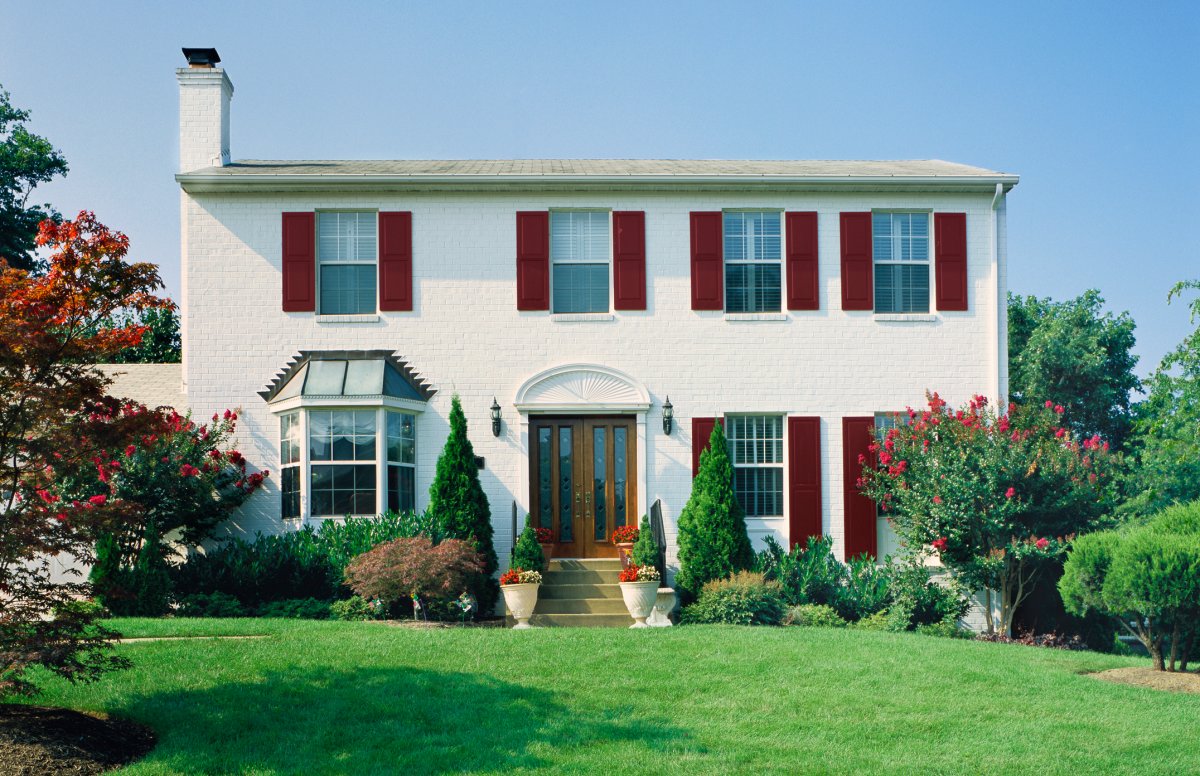

We may earn revenue from the products available on this page and participate in affiliate programs. Learn More ›
One way to boost your curb appeal is to include foundation plants in your landscaping plan. Placing plants in front of exterior walls, near and along edges of the home and its foundation, and under windows can help soften the look around the perimeter of your home. It also ties the solid structure of the building into the nature around it.
However, foundation plants can end up causing problems. “It’s crucial to select plants that won’t damage your property,” says Evan Davis Santi, president of Urban Plantscapes LLC, which services clients in the New York City; Pittsburgh; Washington, DC; Miami; and Toronto metro areas. “Some plants have aggressive root systems or cause moisture-related issues that could harm your foundation.” Other potential problems include damage to the foundation and pipes, soil erosion, drainage issues, pest and insect infestation, and blocked airflow and ventilation.
To prevent these concerns, it’s important to keep foundation plants far enough away from your house. Santi recommends the following planting distances for trees and other types of vegetation:
- Small shrubs (under 3 feet tall): 3 to 4 feet from the foundation
- Medium shrubs (3 to 5 feet tall): 4 to 6 feet from the foundation
- Large shrubs (5-plus feet tall): 6 to 10 feet from the foundation
- Small trees (under 20 feet tall): at least 10 to 20 feet away
- Large trees (over 20 feet tall): at least 20 to 40 feet away
“By carefully selecting foundation-friendly plants and maintaining appropriate distances, you can protect your home from costly repairs while still enjoying a beautiful landscape,” says Santi. “Always remember that a little thoughtfulness in your landscaping choices can go a long way in safeguarding your home’s integrity for years to come.” Below are seven foundation-friendly plants that Santi recommends, as well as three to avoid.
Plants That Can Grow Near Your Home’s Foundation
1. Summersweet (Clethra alnifolia)
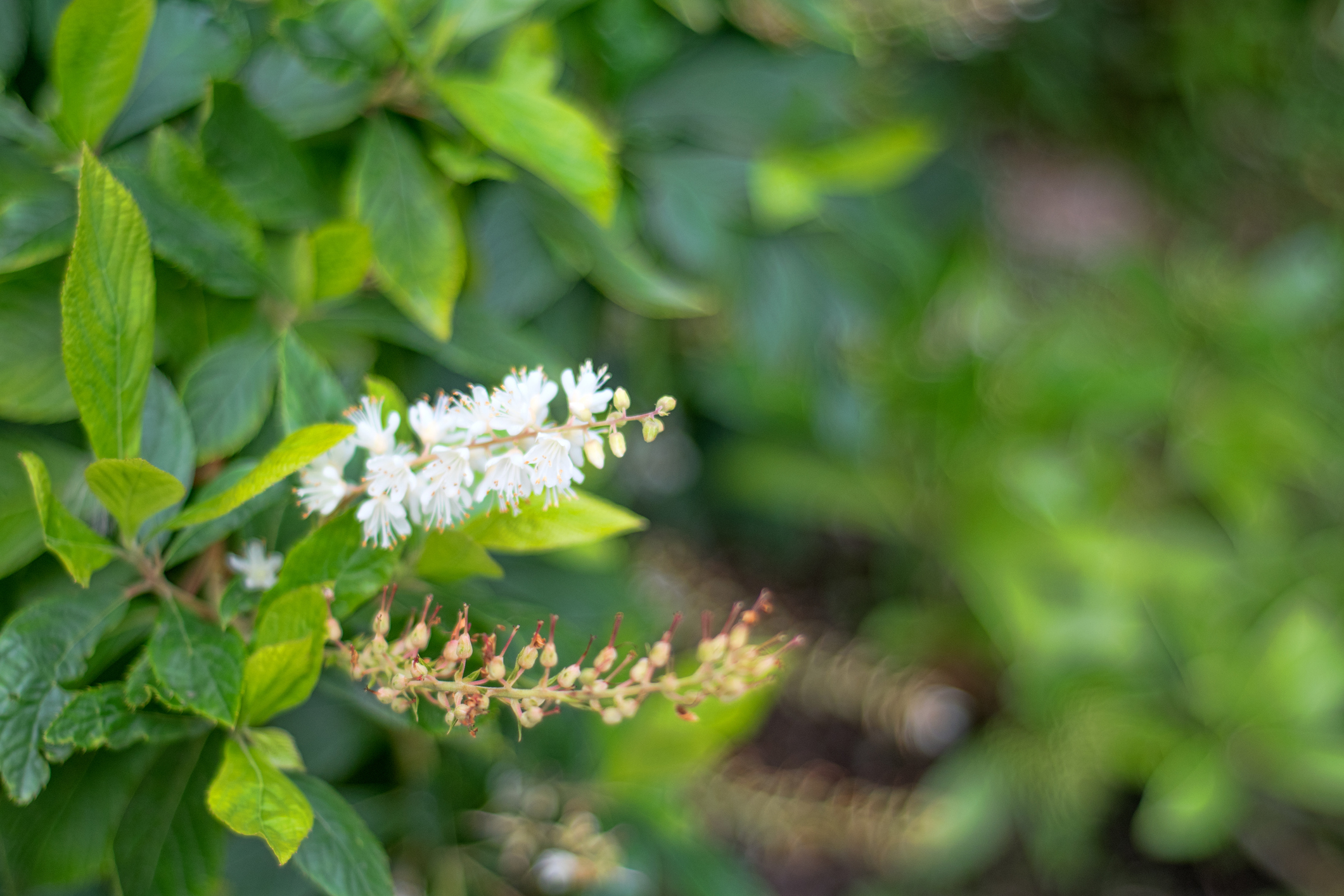
This medium-size deciduous shrub for the front of your house has large fragrant flowers that attract pollinators like butterflies and hummingbirds. They come in white, pink, or rose colors. Several varieties of this plant are available, including Crystalinia, Hummingbird, Pink Spires, Rosea, Ruby Spice,and Sixteen Candles. Santi prefers the Hummingbird variety with white blossoms. Summersweet is moisture-tolerant and thrives in most climates. It prefers full sun to partial shade and acidic, sandy soil. Summersweet is ideal for damp areas near foundations, says Santi.
Hardiness Zones: 4 to 9
Mature Size: 3 to 8 feet tall, 4 to 6 feet wide
2. Fothergilla (Fothergilla)
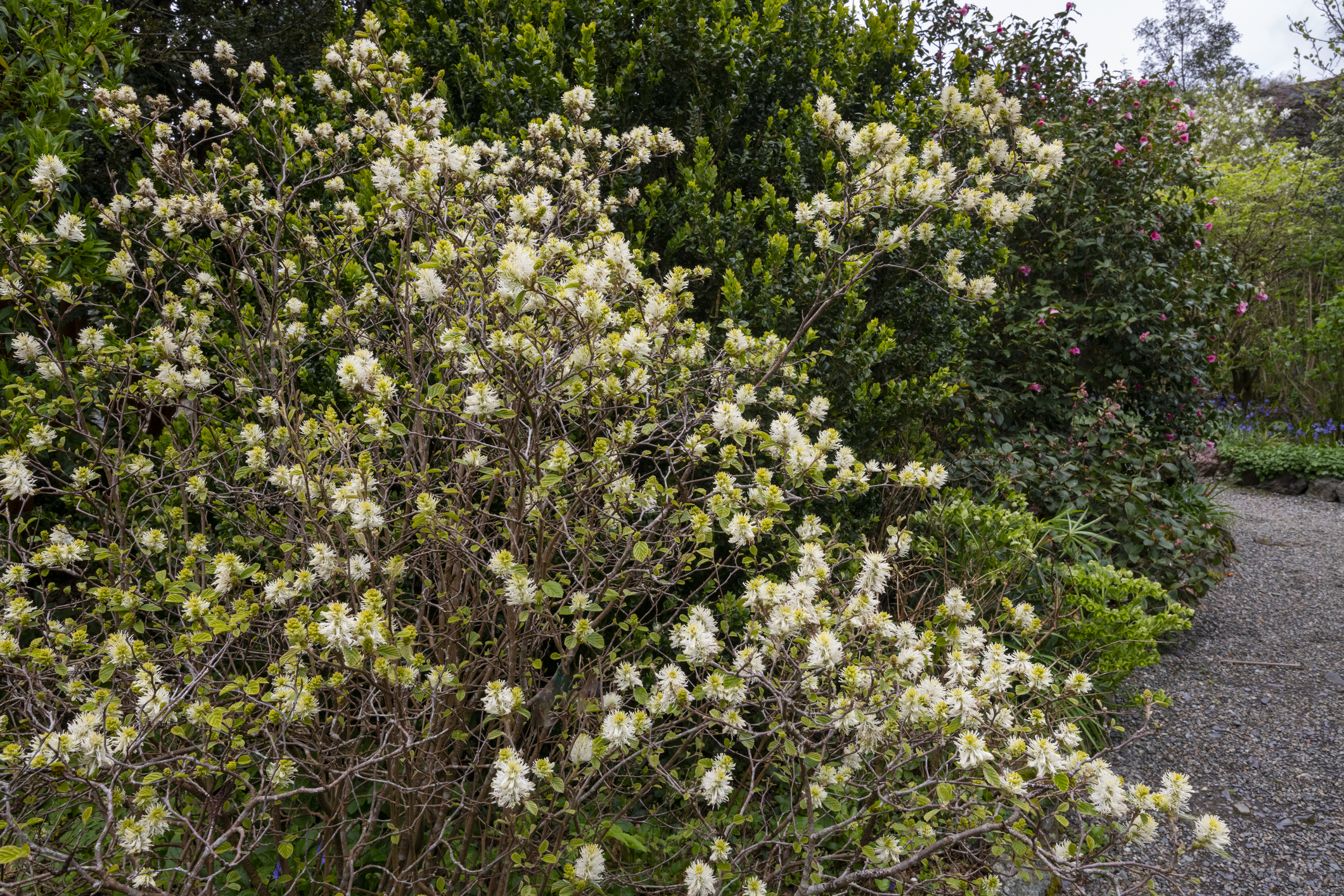
This is a slow-growing native flowering shrub that works well as a foundation plant, especially when several are placed in a row. It has a round, dense shape and sweet-smelling flowers that are white in the spring, plus vibrant foliage colors in the fall. Santi prefers Fothergilla for its well-behaved roots and low maintenance, making it safe near the foundation. Plant in areas that receive full sun or partial shade and moist, well-draining soil that is rich in organic matter.
Hardiness Zones: 4 to 9
Mature Size: 3 to 12 feet tall, 3 to 10 feet wide
3. Blue Fescue (Festuca glauca)

Blue fescue is a clump-forming ornamental grass with striking blue-gray foliage and pale green flowers, says Santi. “It has noninvasive roots, thrives in poor soil conditions, and requires minimal care.” It is also drought-tolerant, and unlike other ornamental grasses, blue fescue grows quickly. This plant favors full sunlight yet tolerates partial shade and consistently moist soil that drains well.
Hardiness Zones: 4 to 9
Mature Size: 6 to 12 inches tall, 6 to 18 inches wide
4. Liriope (Liriope muscari)
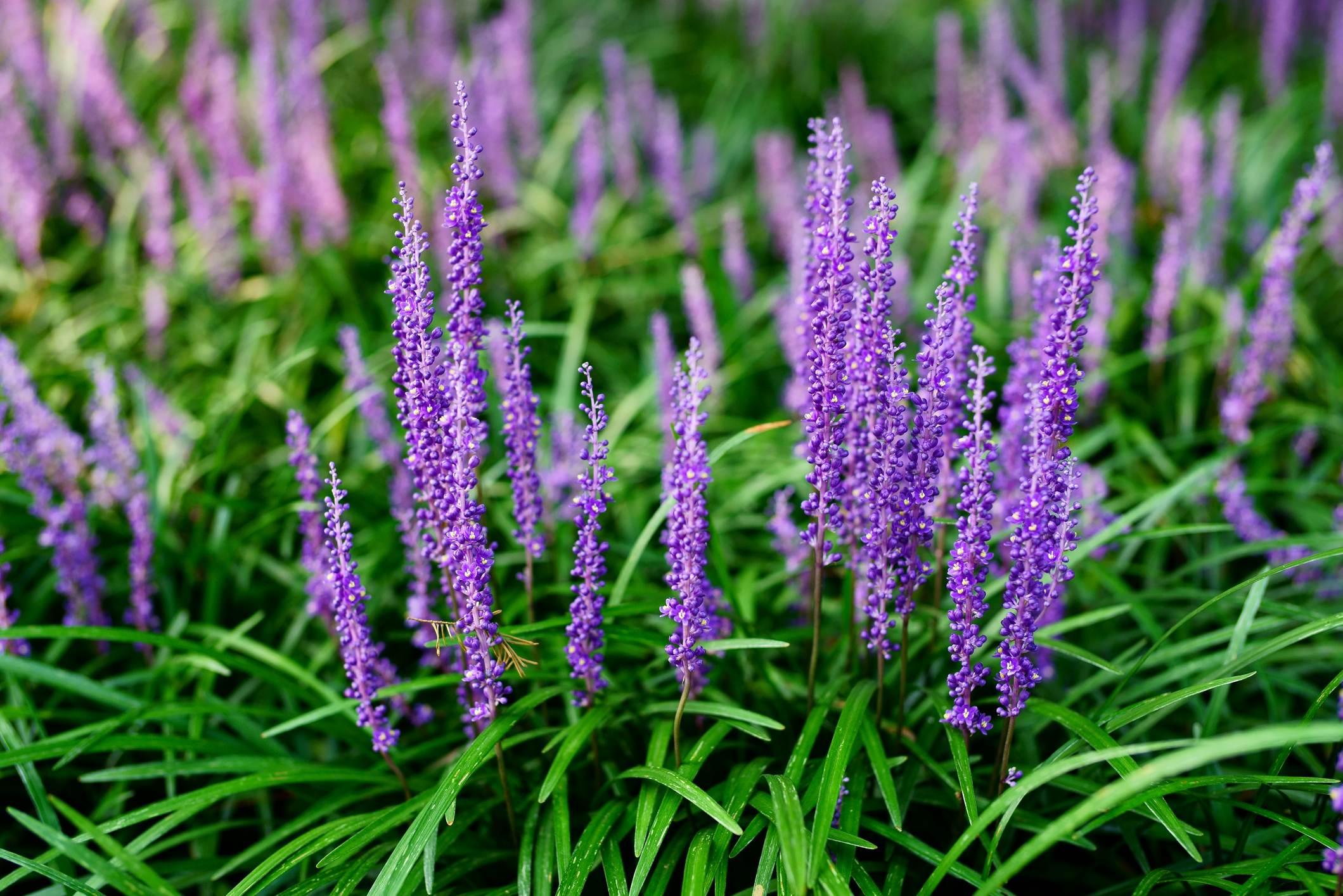
Named for its spiky flowers, liriope is a grass-like, clumping perennial with vivid purple flowers that bloom in the summer. It is low maintenance, drought-tolerant, and helps prevent erosion and control weeds. “It grows well in both sun and shade, and is a noninvasive option for foundation planting,” says Santi. Liriope also tolerates a wide range of soils and soil conditions, but doesn’t like constantly wet soil.
Hardiness Zones: 4 to 10
Mature Size: 9 to18 inches tall, 12 to 18 inches wide
5. Eastern Redbud (Cercis canadensis)

With a lifespan of 20 to 25 years, this compact native ornamental tree has pink spring blossoms that attract birds, hummingbirds, and butterflies. “Its small, deep roots reduce the risk of disrupting your foundation,” says Santi. Eastern redbuds are low-maintenance trees and thrive in full sun to partial shade. While they can adapt to a wide range of soil types, they prefer well-draining fertile soil.
Hardiness Zones: 4 to 8
Mature Size: 20 to 30 feet tall, 25 to 35 feet wide
6. Dogwood (Cornus florida)
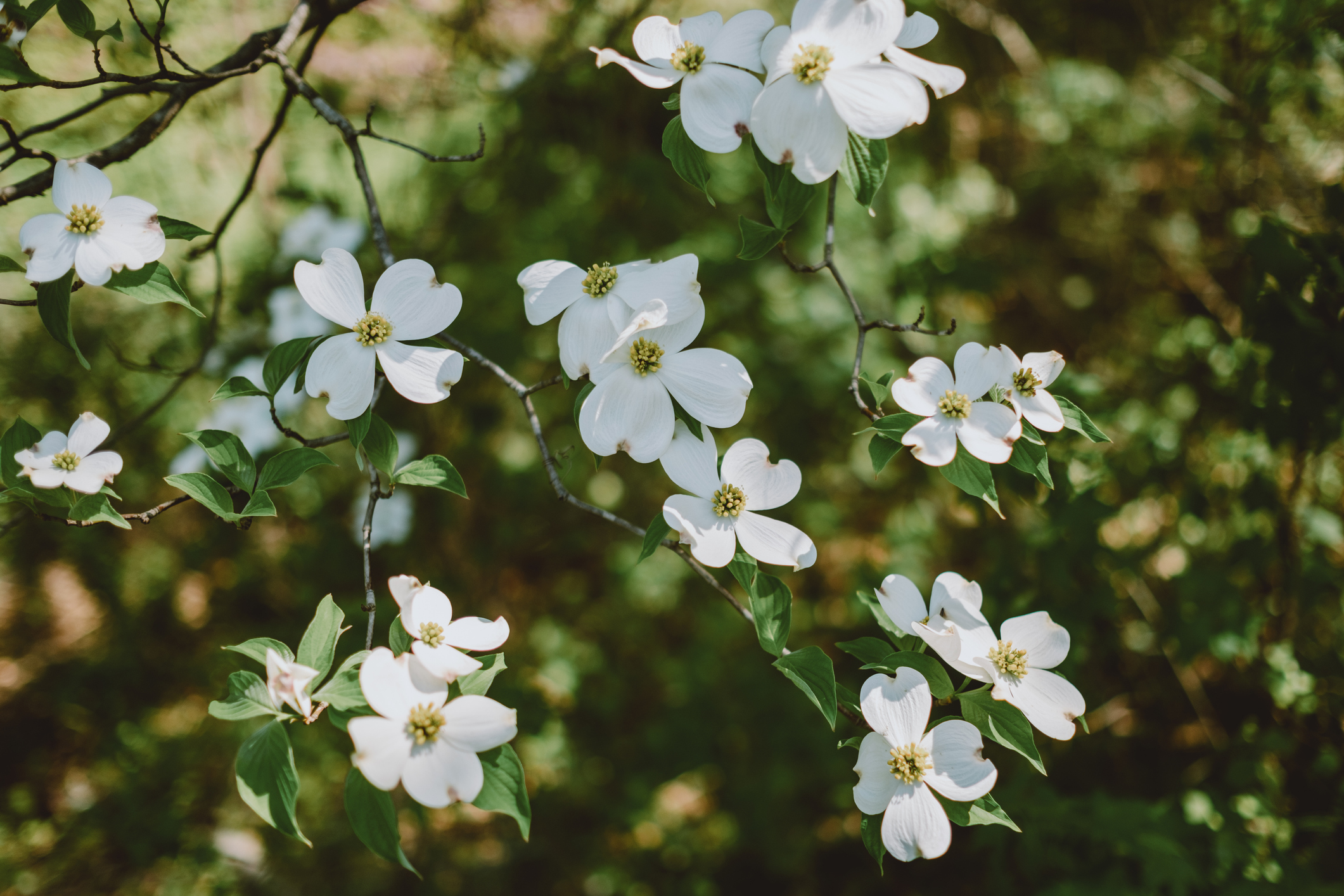
Known as the flowering dogwood, this beautiful understory tree has spring blooms and red berries with fall foliage. “Its well-behaved roots make it a safe choice for planting near homes,” says Santi. Plant these trees in a partially sunny area with minimal direct afternoon sun. They also prefer well-draining soil that is moist but not overly wet. Water at least twice a week in most areas, and prune occasionally to maintain the tree’s shape. Remove dead or broken branches in late winter.
Hardiness Zones: 5 to 9
Mature Size: 15 to 30 feet tall, 15 to 30 feet wide
7. Smokebush (Cotinus coggygria)
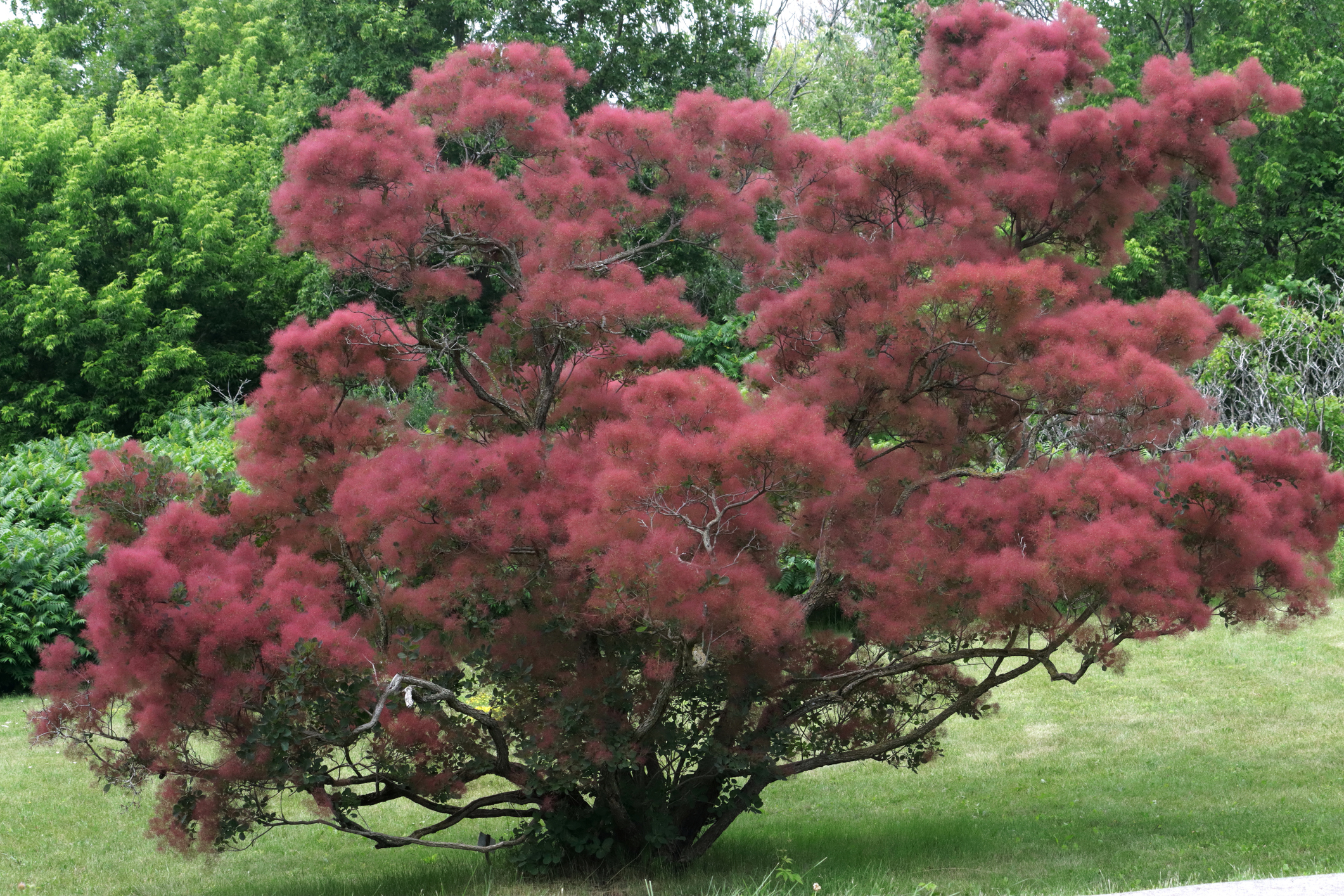
Also called a smoketree, this is a compact deciduous shrub or small tree with reddish-purple leaves and wispy summer blooms. “Low water needs and shallow roots make it an excellent foundation plant,” notes Santi. This plant thrives in almost any soil type, but does best in slightly sandy loam. It also likes full sun, climates with moderate temperatures, and average to dry humidity levels. Keep in mind that its sap is mildly toxic to people.
Hardiness Zones: 4 to 8
Mature Size: 10 to 15 feet tall, 10 to 15 feet wide
Never Grow These Plants Near Your Home’s Foundation
1. English Ivy (Hedera helix)
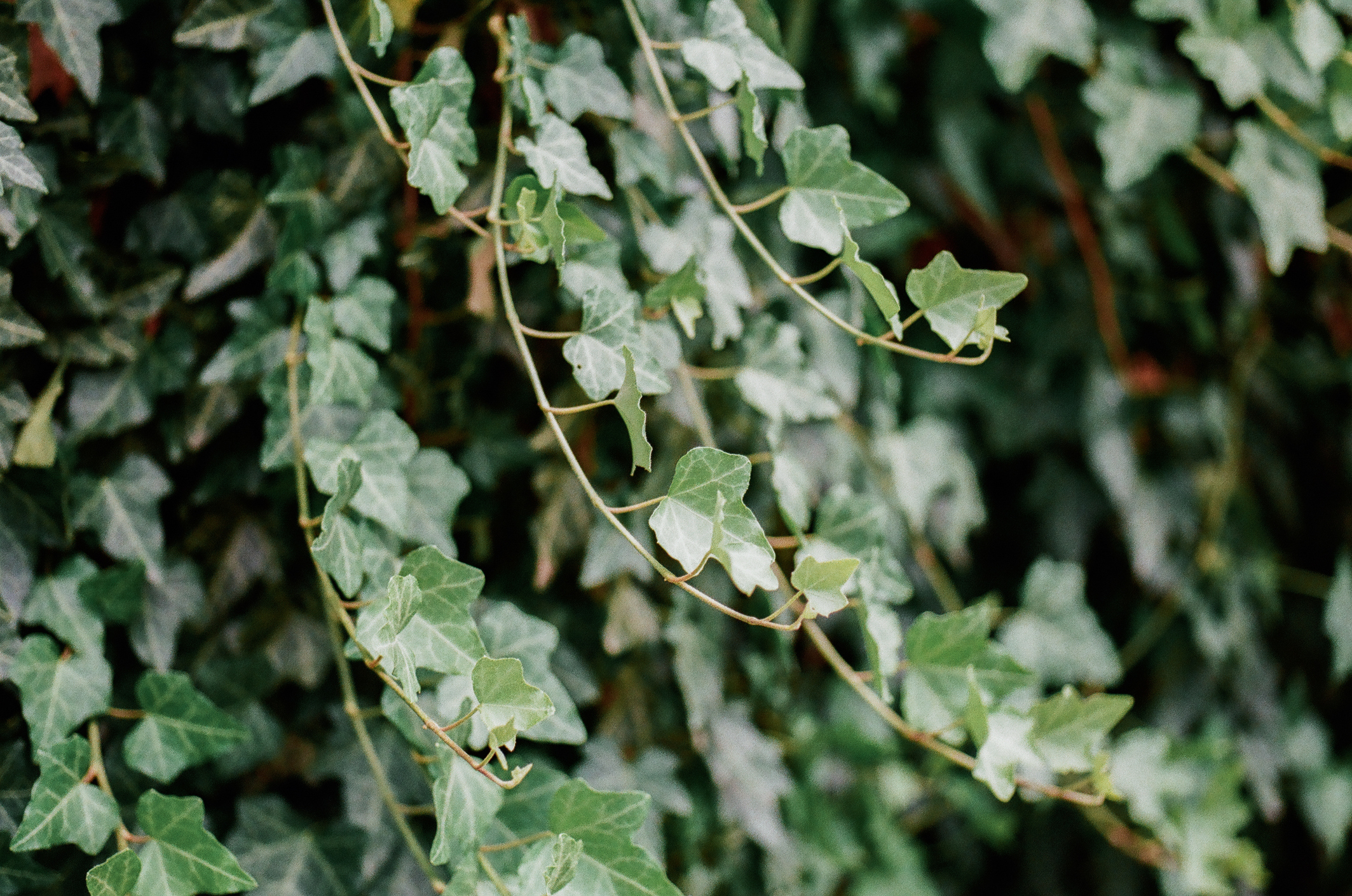
English ivy is one of the worst spreading plants due to its rooting ability. “It climbs walls and deteriorates buildings, potentially leading to structural damage,” says Santi. “Listed as an invasive species in many areas,” it is a poor choice for foundation planting, says Santi. Ivy also slowly kills trees, shrubs, and other vegetation by blocking out sunlight.
Hardiness Zones: 4 to 13
Mature Size: 20 to 30 feet tall, 3 to 15-plus feet wide
2. Privet (Ligustrum spp.)

Common privet is a fast-growing semi-evergreen deciduous shrub often planted as a hedge. But the shrub is extremely invasive and its roots interfere with foundations and underground utilities, says Santi. You can spot privet shrubs by their dense, oval, or lance-shaped, glossy green leaves and small, white tubular flowers with a strong fragrance in the beginning of summer and small, black, round berries at the end of summer. Keep in mind that the fruit and leaves are toxic to humans and pets.
Hardiness Zones: 4 to 7
Mature Size: 10 to 15 feet tall, 4 to 15 feet wide
3. Lilac (Syringa spp.)

Although beautiful given their blooms ranging from shades of lilac, light purple, and lavender, lilac shrubs have deep, woody root systems that can disrupt pipes and foundation stability over time, says Santi. Therefore, avoid planting them near the foundation of your home and consider opting for lilacs as a landscaping choice in other parts of your yard.
Hardiness Zones: 3 to 7
Mature Size: 8 to 16 feet tall, 6 to12 feet wide
